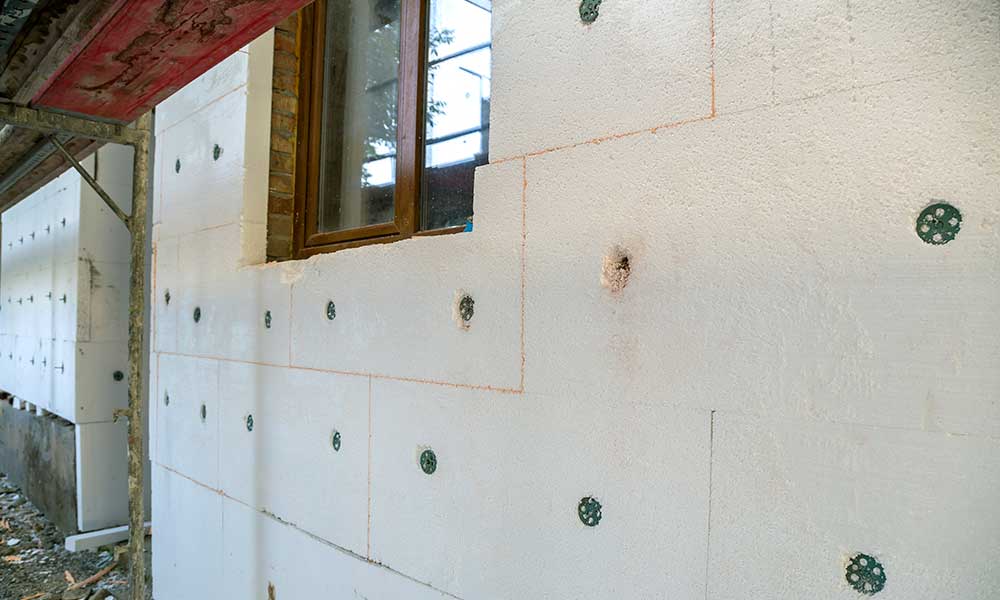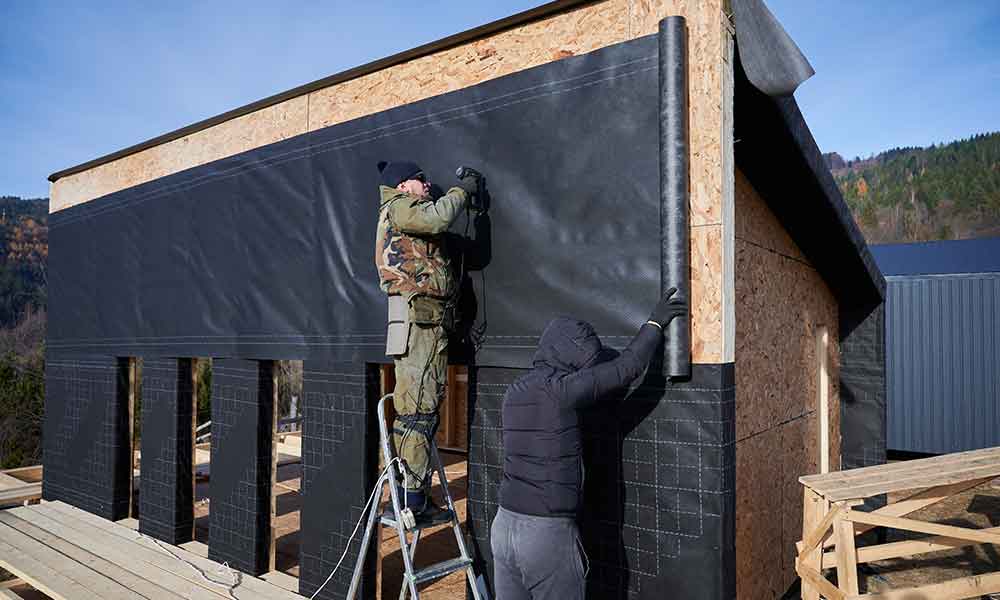Introduction
If you’re looking for ways to reduce energy consumption in your building, you might be considering an advanced insulation system. With the right materials and application, advanced insulation can help your building stay more comfortable in all seasons, save money, and reduce the environmental impact of your energy use.
But what is advanced building insulation? What benefits does it offer? How do you know if it’s right for your project? These are all great questions. In this article, we’ll explore why advanced building insulation is so effective and beneficial, and how to incorporate it into your building project. We’ll also discuss the different types of advanced insulation systems that are out there, so you can decide which option will work best for your needs.
What Is an Advanced Building Insulation System?
So, you’re interested in exploring energy efficiency in buildings? Before you can make an informed decision, you must first understand what an advanced building insulation system is. An advanced building insulation system works to improve the energy efficiency and overall comfort levels of your home or office space by providing additional protection from external temperatures. This is achieved by layering specific materials around the outside of the building that act as barriers to heat flow.
These materials are specially designed to be reflective, flexible and breathable, which makes them ideal for controlling surface temperatures and creating a space that’s better insulated from external heat sources. Not only do these systems reduce the amount of energy needed to maintain comfortable temperatures in a room, but they also help absorb sound and reduce condensation for improved air quality. So don’t wait — upgrade your home or office today with an advanced building insulation system for greater energy efficiency and comfort!

How Does Advanced Building Insulation Help Improve Energy Efficiency?
Did you know that advanced building insulation systems improve both energy efficiency and comfort in buildings? By insulating a building, you’re essentially providing it with a protective blanket that helps keep cool air in during the summer and warm air in during the winter.
Advanced building insulation systems are made up of several different components, each of which work together to create an effective insulation system. Here’s what one of these systems looks like:
- Reflective foil barrier: This is a type of vapor barrier that reflects the sun’s rays back into the atmosphere, helping keep the interior of your home cool.
- Insulation batts: Traditional insulation batts are made from fiberglass or other synthetic materials, providing breathability and thermal protection.
- Air sealing: Creating an airtight seal around doors and windows helps reduce unwanted air infiltration and enhance thermal performance.
- Radiant barrier: Installing reflective material beneath your roof will prevent heat transfer through attic spaces.
By combining all four components, you can create a comprehensive insulation system that will provide maximum energy savings while increasing comfort within your home.
Different Types of Advanced Building Insulation Systems
Advanced building insulation systems, such as spray foam and insulated wall systems, are becoming more popular for their energy efficiency and comfort-enhancing properties. Depending on the structure of your building, there are different types of advanced building insulation that can benefit you:
Thermal Insulation
Thermal insulation is designed to regulate heat transfer and reduce energy loss. These include options like rigid board insulation, spray foam, and even vacuum insulated panels. Thermal insulation helps, so your building maintains a comfortable temperature throughout the year without having to use too much energy.
Acoustic Insulation
Acoustic insulation is designed to dampen sound between rooms and throughout the building by absorbing sound waves. This type of insulation ranges from fiberglass or mineral wool bats to composite materials such as resilient bars and other heavy-duty systems such as acoustic barriers. With acoustic insulation, you get improved comfort within any space in your building as sound waves are dampened more effectively.
Structural Insulation
Structural insulation helps improve structural integrity and performance within any building by providing better support and protection against elements like moisture penetration or thermal bridging—all this enhances energy efficiency and lowers costs in the long run. In addition to preventing outside air from entering the structure, structural insulation helps keep the air within an area fresher for longer periods of time.
Designing a Building Insulation System
When planning the design of an advanced building insulation system, there are a few key things to consider. After all, the goal is to create an efficient and comfortable building with minimal energy usage. By taking into account the climate and conditions of your area, you can set yourself up for success by properly choosing:
Insulation Materials
You have a variety of options when it comes to insulation materials — fiberglass, foam board, cellulose, spray foam and more — and no one solution is right for every area. An experienced installer can help you decide which material will be best suited for your location and building’s needs.
Rim Joists
Rim joists are spaces between your house’s framing and foundation that often get overlooked but need special attention to keep the proper temperature in your home. By installing rim joist insulation or using spray foam insulation around this area can help mitigate air flow from outside temperatures through walls or below floors.
Ductwork
Finally, don’t forget about ductwork! Butted joints should be sealed with metal duct mastic or gaskets to reduce air leakage and improve air quality, further contributing to the energy efficiency of your home. Properly managing indoor air quality is an important part of building energy efficiency.

Benefits of Advanced Building Insulation Systems and Energy Efficiency in Buildings
Advanced insulation systems not only save you money in the long run on utility bills, but they can also increase the comfort of a building. Here are a few more benefits of this type of insulation:
Improved Indoor Air Quality
Advanced insulation systems improve indoor air quality by reducing pollutants like formaldehyde, radon, and airborne toxics that may be present in the air. Additionally, these systems create healthier homes for people and pets by reducing mold and mildew risk.
More Resilient Buildings
Advanced building insulation systems make your home more resilient to outside forces such as flooding or extreme temperatures. As mentioned above, these systems also provide better protection against fire and water damage, as well as sound absorption for noisy neighborhoods or distractions from nearby construction sites.
Increased Building Value
Finally, energy-efficient buildings that use advanced insulation systems often have higher resale values than their less efficient counterparts. Potential buyers will likely appreciate the reduced energy bills associated with an advanced insulation system, so they’ll be willing to pay more for it down the road.
The benefits of advanced building insulation systems are numerous: reduced utility bills, improved indoor air quality, enhanced resilience to outside forces, and increased resale value—all this leads to a much more comfortable living experience overall!
Common Questions About Building Insulation and Energy Efficiency in Buildings
You may have some questions about energy efficiency in buildings and how to get the most out of advanced building insulation systems. Here are some common questions and answers about improving energy efficiency in buildings.
What is the best way to insulate a building?
The best way to insulate a building is dependent upon its age, size, location and other factors. However, for most buildings, installing quality insulation materials and strategically mounting them in wall cavities, ceiling joists and other areas can be beneficial for reducing energy loss. By using products such as spray foam insulation or cellulose insulation in walls and attic spaces, homeowners can often reduce their energy bills by up to 20%.
How do I know if my insulation is working?
If you have concerns that your current insulation isn’t doing its job properly, there are a few simple tests you can do. Start by looking out for evidence of moisture accumulation or air leakage—these are signs that your insulation isn’t doing its job correctly. If you still have doubts or want more detailed information on the performance of your system, consider getting an energy audit done. Energy auditors will use specific testing methods to determine the overall performance of your building’s current insulation system and provide recommendations on how to improve it.
By investing in high-quality advanced building insulation systems, such as spray foam or cellulose panels with airtight seals, homeowners can significantly reduce their energy bills while also increasing their comfort level inside the home. Do your research on the products available to find the best one for your needs—and don’t forget to consult an energy auditor if you need help!
Conclusion
From the smallest home renovation project to a full-scale construction project, advanced building insulation systems provide the highest level of energy efficiency and comfort. Not only do these systems keep your home or office cool in the summer and warm in the winter, but they also help to reduce energy costs.
Not only do advanced building insulation systems have multiple benefits for property owners, but they’re also the key to improving building energy efficiency in larger-scale projects. When choosing advanced building insulation systems, be sure to consider your local climate, the size and scale of the project, and the budget and timeline that you have in mind. With the right insulation system and professional installation, you can make sure your home or office will be comfortable and efficient for years to come.































